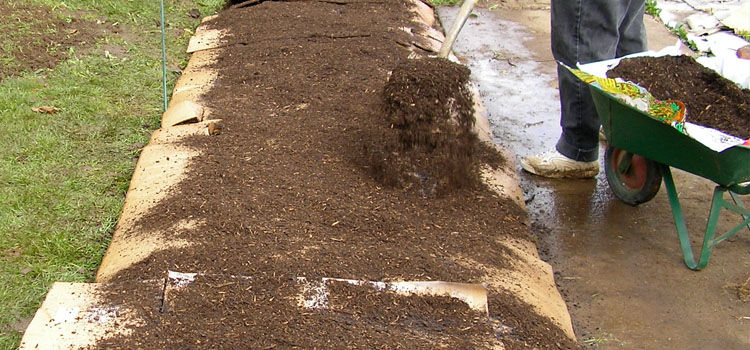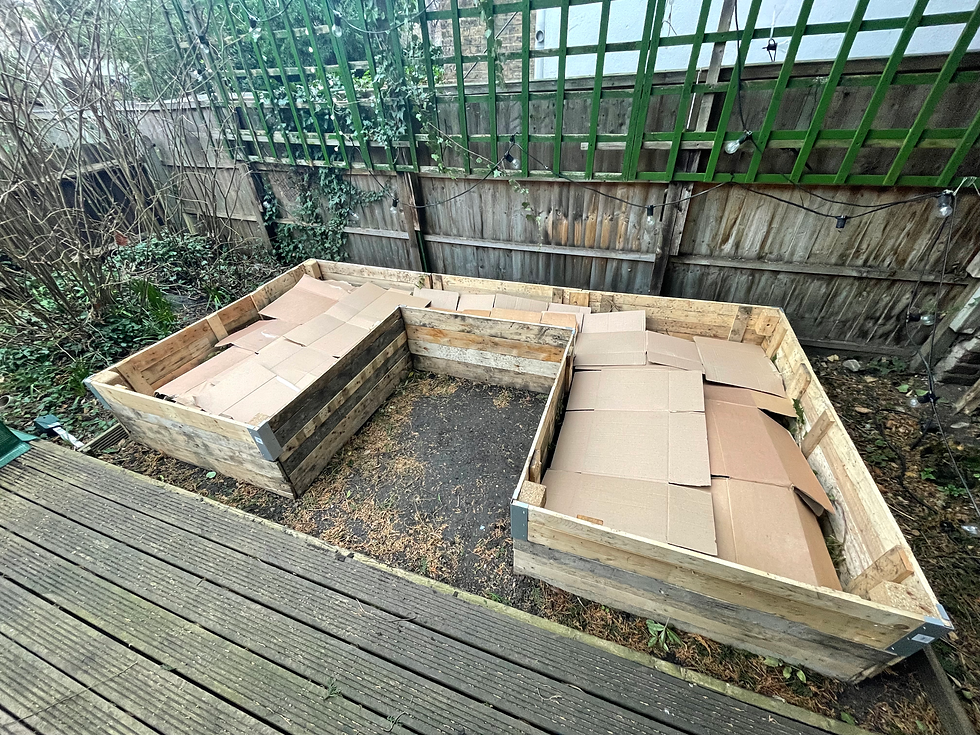Building Soil Health in your Vegetable Garden
- AllotMe

- Dec 15, 2022
- 4 min read

Soil is a critical component of any successful garden or allotment. It is the foundation upon which plants grow, providing them with the nutrients, water, and support they need to thrive. Therefore, maintaining healthy soil is essential for growing your own food.
There are several ways to improve soil health, including adding organic matter, practicing crop rotation, and avoiding over-tilling.
Adding organic matter
Adding organic matter to soil is a common practice in gardening and farming. Organic matter is any material that was once living and has since decomposed, such as plant or animal waste. It can come in many forms, such as compost, aged manure, or green manures (cover crops that are grown specifically to be turned into the soil).
Adding organic matter to soil has several benefits. First, it can improve the nutrient content of the soil. As organic matter decomposes, it releases nutrients, such as nitrogen and phosphorus, that plants can use for growth. This can help to support healthy plant growth and reduce the need for chemical fertilizers.
Second, adding organic matter can improve the structure of the soil. Soil structure refers to the arrangement of soil particles, such as sand, silt, and clay, and the spaces between them. A good soil structure allows for proper drainage and aeration, which are important for plant growth. As organic matter decomposes, it helps to create a more stable and porous structure in the soil, which can improve drainage and aeration.
Third, adding organic matter can help to increase the population of beneficial microorganisms in the soil. These microorganisms, such as bacteria and fungi, play a critical role in the health of the soil. They help to break down organic matter, release nutrients, and support the growth of plants. By adding organic matter, you can increase the number of these microorganisms and improve the overall health of the soil.
There are several ways to add organic matter to soil. The most common method is to incorporate it directly into the soil using a shovel or tiller. This can be done at the beginning of the growing season, before planting, or throughout the season as needed.
Another method is to use a mulch, which is a layer of organic matter placed on the surface of the soil. Mulches can help to suppress weeds, retain moisture, and regulate soil temperature. They can also break down over time and add organic matter to the soil.

No-dig Gardening
No-dig gardening can be a great way to build soil health. Traditional tillage practices can damage the structure of the soil and harm the beneficial microorganisms that live in it. By avoiding these practices, the soil is able to maintain its natural structure and support the growth of a diverse range of plants.
No-dig gardening can also help to reduce erosion and maintain moisture in the soil. When the soil is disturbed through tillage, it can become more susceptible to erosion from wind and water. By leaving the soil undisturbed, it is better able to hold onto moisture and resist erosion.
In addition, no-dig gardening can save time and labor. Traditional tillage techniques can be labor-intensive and time-consuming, especially in larger gardens or farms. No-dig gardening eliminates the need for these practices, making it a more efficient and sustainable method of gardening.
Using raised beds is another technique that can improve soil health and increase the productivity of a garden.
Raised Beds
Raised beds are essentially small, elevated garden plots that can be filled with soil and plants. They have several benefits, including improved drainage, improved soil structure, and easier access for gardening.
One of the main advantages of raised beds is that they improve drainage. Because the soil in raised beds is elevated, it is better able to drain excess water, which can help to prevent waterlogging and promote healthy plant growth.

Raised beds can also improve soil structure. The soil in raised beds is often amended with organic matter, which can improve its nutrient content and structure. This can help to support the growth of a diverse range of plants and improve overall soil health.
In addition, raised beds can make gardening easier and more accessible. Because the soil is elevated, it is easier to reach and work with, making it a good option for gardeners who may have mobility issues. Raised beds can also be placed in a variety of locations, including on rooftops or balconies, making them a versatile option for urban gardening.
Crop Rotation
Crop rotation is the practice of growing different crops in a specific order in a given area. This can help to prevent the depletion of nutrients from the soil and reduce the risk of pests and diseases. It also allows for a more diverse range of plants to be grown, which can help to improve the overall health of the soil.
Over-tilling, or excessively digging or stirring the soil, can damage its structure and harm the microorganisms that live in it. It is best to avoid over-tilling and instead use techniques such as mulching or shallow cultivation to help improve soil health.

Testing your soil
Testing soil health is also important to ensure that plants are receiving the proper nutrients and that the soil is in good condition for growing. Soil tests can determine the pH level and nutrient content of the soil, as well as its structure and the presence of any contaminants. This information can help you to determine the best course of action for improving the health of your soil. (Soil test kits can be found from a number of online retailers..)
There are a range of soil types found throughout the UK, including clay, loam, and sandy soils. Clay soils are dense and heavy, with a high nutrient and water-holding capacity. Loam soils are a mixture of clay, sand, and silt, and are considered to be the most fertile. Sandy soils are light and well-draining, with a low nutrient content.
Each type of soil has its own unique characteristics and requires different management practices to maintain healthy soil. For example, clay soils may need to be amended with organic matter to improve drainage, while sandy soils may need to be irrigated more frequently to prevent moisture loss.

In conclusion, maintaining healthy soil is essential for successful food production. By adding organic matter, practicing crop rotation, and avoiding over-tilling, you can improve the health of your soil and support the growth of a diverse range of plants. Soil testing can provide valuable information about the nutrient content and condition of your soil, and can help you to determine the best management practices for your specific soil type.

Comments